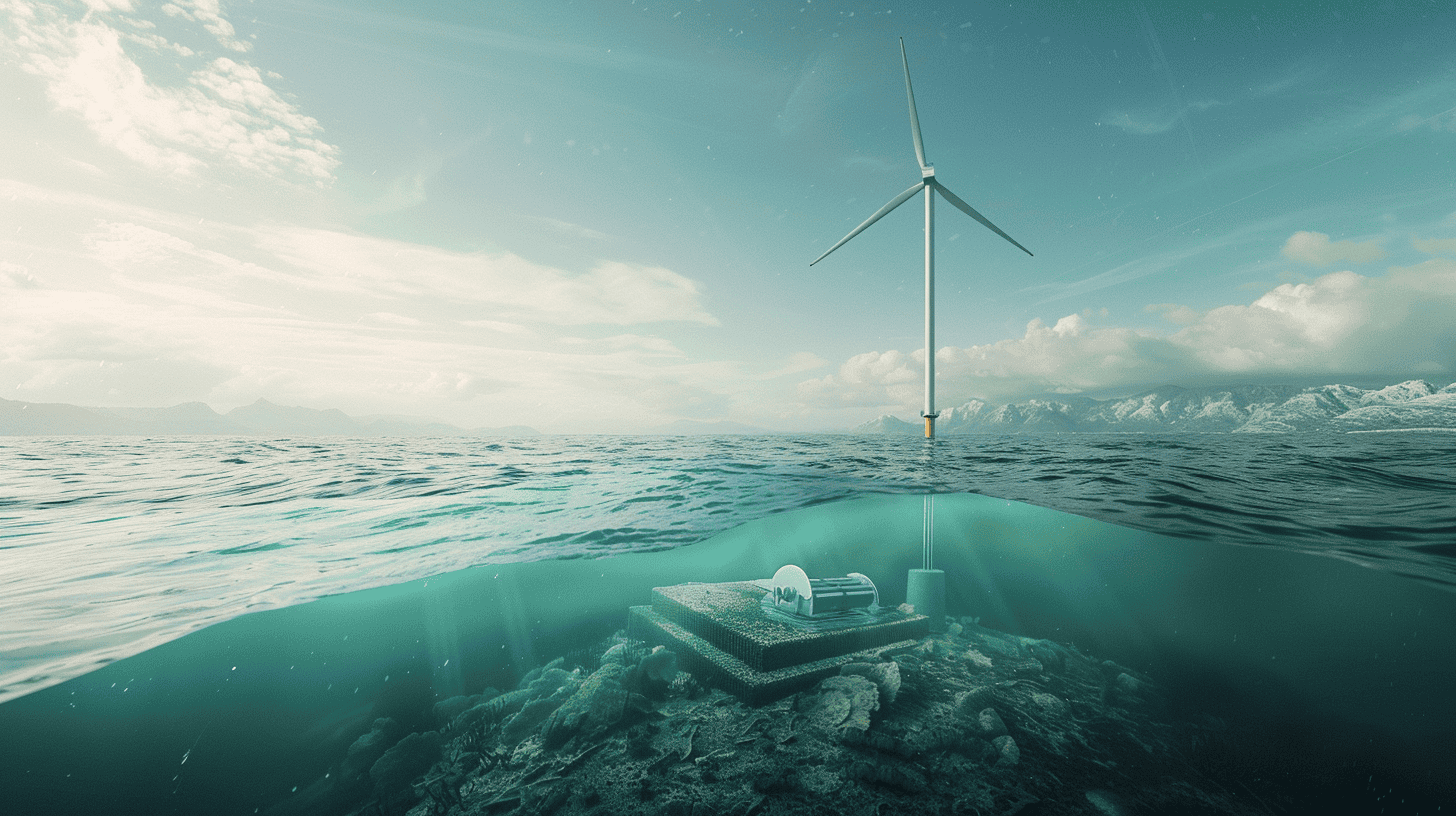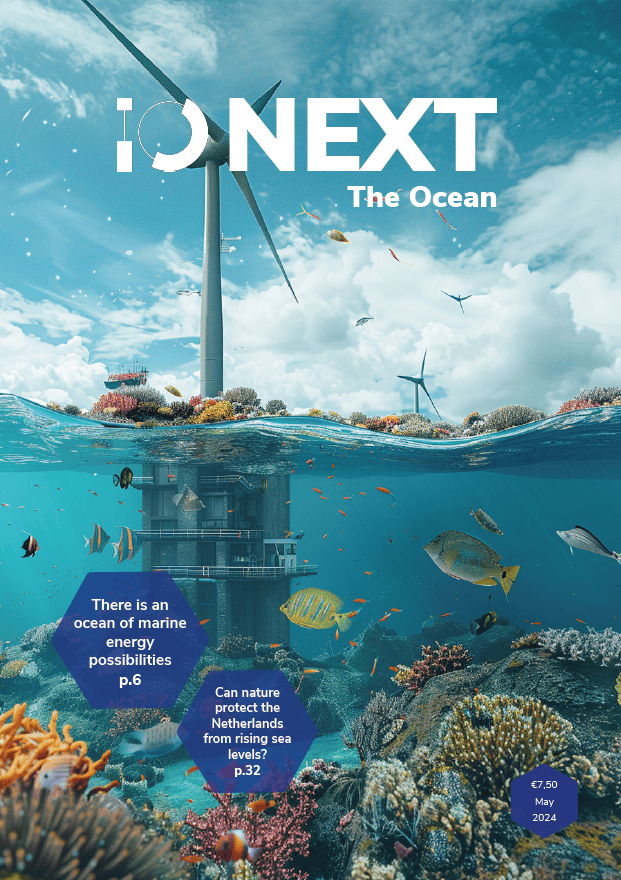
In the future, we’ll use more sustainable energy from wind and solar. Due to weather conditions, however, the availability of energy fluctuates. That’s why electricity storage systems are indispensable. Ocean Grazer, a hydroelectric plant, can store excessive energy from wind farms on the seabed or in sand quarries. They’ll test a prototype this year.
The shift towards more sustainable energy necessitates the expansion of offshore wind farms. One significant advantage of Ocean Grazer’s system is its ability to scale up alongside wind farm capacity. The storage system consists of multiple interconnected, self-contained units, allowing for seamless expansion as the wind farm grows. Furthermore, in case of a malfunction, maintenance can be conducted without the need to shut down the entire system.
How it works
The system comprises a pump and large bags installed on the seafloor. When wind turbines generate surplus energy, it activates the pump, which draws water from an underground reservoir into the bags. Seawater pressure compresses the bags, and when energy is required, they release water to drive turbines for electricity generation. Also, the Ocean Battery is suitable for shallow waters, including the North Sea.

Compete with conventional systems
Eventually, the company wants to compete with conventional storage systems. CEO of the company Frits Bliek, earlier on during a webinar hosted by KIVI Elektrotechniek: “You can convert energy into hydrogen at those times when you have a surplus. We are also moving more and more towards hydrogen solutions in the Netherlands. However, this does not have a very high level of efficiency.” Conversion of electricity to hydrogen runs at an efficiency of about 75 percent, while the Ocean Battery can reach 80 percent, the company states.
And there are other advantages. The battery is sustainable on several levels. “Except for the magnet in the pump, we don’t use any rare earth materials. This is the case, for example, when you start using lithium batteries in large numbers. Moreover, we use water in the storage system. So, if the system were to leak, no pollutants would end up in the sea.” According to Bliek, the storage system can be used as an artificial reef. “All in all, I think we have a very positive effect on the environment.”
What can we learn from the sea? What role can the ocean play in generating renewable energy? And how can innovations help us take better care of the sea? Find out in our newest edition: IO Next: The Ocean.

Testing a prototype
In 2021, Ocean Grazer completed the first testing phase of the storage system in Eemshaven, Groningen. Now it’s time for the next step. In a sand excavation in Sellingerbeetse, also Groningen, Ocean Grazer is preparing a demo plant. The battery will be placed at a depth of 50 meters and has a capacity of 3MW. The system includes an underground reservoir, 200 meters long and 15 meters in diameter. By carrying out the project on land, the company can closely monitor conditions and easily make any adjustments without the challenges of working offshore. Moreover, this on-land project demonstrates that it is possible to use inland waters.
“In the Netherlands, there are about 500 sand quarries that you could build our system into”, Bliek said. “There are plans to build floating solar parks in many locations. It was eye-opening to discover the numerous locations in the Netherlands slated for solar park development. That’s another whole new market for us.”
By 2025, the company aims to have demonstrated the battery’s readiness for energy storage on the seabed.

